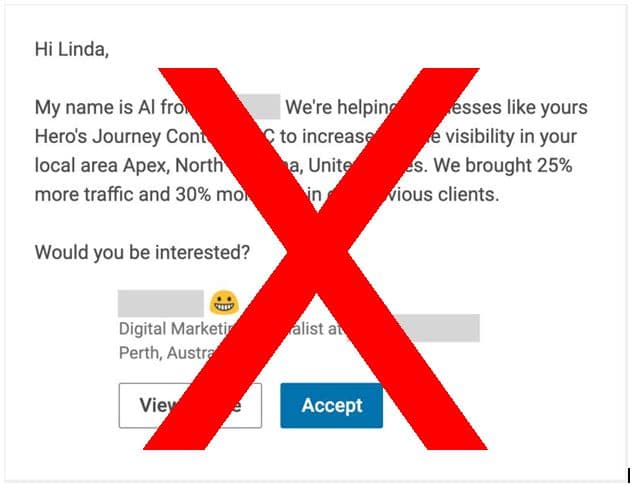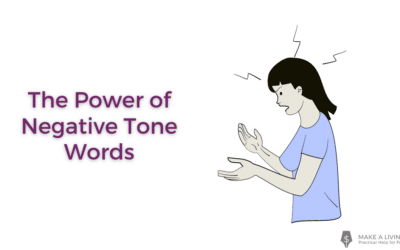You know…you find the perfect prospect in your niche, write a pitch letter, hit send, and then…nothing.
That ever happen to you?
If you’re trying to move up, earn more, and get freelance writing clients, the pitch letter is one of the best ways to make it happen.
Sending out a lot of pitch letters (aim for 100 a month), especially when you’re starting out is a smart goal. Think of it like the Hunger Games…”May the odds be ever in your favor.”
So you’re gung-ho about sending out pitches? That deserves a virtual fist-bump for enthusiasm.
But if your pitch letter sucks, it’s a recipe for frustration, next-to-zero-responses, and not enough prospects and clients lined up to make a living writing. Sound familiar?
I’ve seen it hundreds of times inside the Freelance Writers Den where writers submit their pitch letters for review.
You’ve done the work to identify a solid prospect, but your pitch letter is primed to trigger some editor’s primal instinct to hit the Delete button. And that’s not what you want.
Want to learn how to write a pitch letter that gets noticed? Follow these simple steps.
1. Get your pitch-letter greeting right
Let’s start at the very beginning…the person you’re pitching.
You know, an editor, a marketing director, a content manager, someone who likely needs help with freelance work.
Do yourself a favor and skip the formalities. Never start your pitch letter with:
- Dear Mr., Mrs., Ms. (last name)
- To whom it may concern
- Dear Editor
- Your Highness (wait…that might actually work…JK)
Think about the pitch letter like meeting your contact for coffee and keep it simple:
Hi (First name):
2. Personalize your pitch-letter intro
One of the worst things you can do when you write a pitch letter, says freelance writing pro and content marketing expert Linda Formichelli, is open with some lame-sauce generic statement like:
“I read your blog your site/content-strategy-writing-advice/ and really enjoyed it.”

The power of first impressions
If you pitch this way, it’s a tell-tale sign you haven’t done any work to:
- Study the site
- Get to know the audience
- Understand the company’s product or service, or
- Capture their voice and style.
And that’s not how to make a good first impression.
Editor’s note: I get 100-plus pitches for Make a Living Writing every month. And almost all of them look like this. If you make a bad first impression within the first sentence in any pitch letter, your chances for getting a response, a call, or an assignment are next to zero.
So what should you say in your pitch letter intro?
Get the prospect’s attention. Show them you’ve done your homework. Be funny, conversational, interesting. Show off your personality. And mention something specific about the prospect like a:
- Recent blog post
- Press release
- News story or interview
- Certification or award
- Promotion
- Content from their website
- Useful piece of (niche) industry news/research
After a little help in the Freelance Writers Den, freelancer Kim Callaghan wrote this awesome pitch letter intro:
Hi Jeremy,
Last night I was told about Sandbagger for the first time. While my relatives raved about it, I was browsing the Sandbagger site and started laughing when I read that Bill was “…unsaddled by ambition” in his golf game. Using this wording is a great marketing tactic, relating all the recreational golfers out there to the inventor of the drink.
Get the idea? You’re looking for a conversation starter…something that makes you stand out among the drivel that flood the inboxes of editors, marketing directors, and content managers.
When you make a good first impression, you’re a lot more likely to get a response. And that’s what you want…Yes. No. Not now, but maybe later. These are all wins.
Getting a response is proof you’re on the right track. And if you keep going, the odds will “be ever in your favor.”
3. Customize your bio
As soon as possible, you want to let your prospect know you’re a freelance writer in your pitch letter.
But not just any freelance writer. You want to position yourself as THE freelance writer in your niche with a customized bio.
- Don’t do this. Too often, writers serve up a comprehensive work history in their bio. The pitch letter ends up looking like an all-about-me message, lengthy curriculum vitae, or generic-resume fodder.
Create a custom ‘elevator speech’ to show off your skills
Think of the writer bio in your pitch letter like the ‘elevator speech.”
You get a couple of short sentences to introduce yourself and highlight the skills most relevant to your prospect, like this:
- I’m a freelancer who writes about (niche topics) for businesses.
- I’ve written for (brands, companies, businesses). OR I’ve been published in (newspaper, magazine, trade journal, etc.)
- I help (niche) businesses by writing content to build authority, generate leads, and drive traffic.
- You may also consider adding another piece of information to your bio like certifications, training, special skills, or specific type of writing you do (blog posts, case studies, white papers, etc.). Or maybe mention a recent win or client-success story. But keep it brief.
You should be able to explain what you do as a freelance writer in just a couple sentences. Customize it a little for every pitch letter you write.
4. Encourage engagement
Just so we’re clear, an effective pitch letter isn’t very long. A couple of well-written paragraphs.
Get your prospect’s attention with a well-written intro and bio. Then what?
Be helpful.
This doesn’t mean you give a long discourse about the value of case studies, SEO, or content marketing.
IMO…This approach is a tough sell when you don’t have the know-like-and-trust factor on your side yet.
The pitch letter isn’t where you lay out an entire content strategy, or tear into the prospect about everything they’re doing wrong (like the blog they haven’t updated in five years).
You’re really just trying to get a conversation started. One of the easiest ways to do this is to just be helpful with a simple question or direct call to action, like this:
- Do you need help with your blog?
- What upcoming content projects do you need help with?
- Need help from a freelancer until you fill the full-time position?
- What articles do you need to assign for the upcoming issue?
- Check out some of my samples (and include links to a couple relevant clips)
- Would you like to set up a 10-minute phone call to talk about your content needs?
- Hit reply, send me a message, and we’ll go from there.
- Can I send you some clips?
- Or offer up some specific ideas for blog posts, a lead magnet, case study, etc.
Make it as easy as possible for your prospect to engage. No rigid agenda. No rate or pricing discussion. No preachy this-is-what-you-should-do messaging.
You’re just trying to open the door and start a conversation.
5. Write a must-click e-mail subject line
What’s the biggest barrier to getting an editor, marketing director, or content manager to open your email and read your pitch letter?
The subject line
Let’s face it. That’s how busy people sift through their inbox.
Scan the subject lines. Nothing to see here…DELETE.
If you want to raise the chances of getting an editor to read your pitch letter, take the time to write a killer subject line.
It’s a lot like writing a great headline for a blog post. Do it right, and the reader is practically foaming at the mouth to find out what you have to say.
You know…tell me more…Click. That’s what you want. Give your contact a reason to open your email.
There’s lots of ways to do this (extra points for creativity and personality):
- Subject: Freelance Writer + (fill in the blank with a niche-related interest…Mushroom Hunter, Tech Geek, Cigar Aficionado, Funnel Freak, etc.)
- Subject: Tired of flaky freelancers? Let’s talk
- Subject: Need a (niche) freelance writer?
- Subject: Got (niche) content needs?
- Subject: Need a vacation? Hire a (niche) freelancer
Now go write some pitch letters…
A lot of them. Pick a goal like 25, 50, or 100 a month. At least more than you’re probably sending out right now.
It’s pretty simple. After you find a good prospect and person to contact, use this pitch-letter checklist:
- Get your pitch-letter greeting right
- Personalize your intro
- Customize your bio
- Encourage engagement & be helpful, and
- Write an awesome subject line
If you’re just starting out, you’re trying to ramp up, or want to replace your clients with better ones, sending out a lot of pitch letters is one of the best things you can do.
But you need to do it consistently. As in every day, every week, every month…until you’re fully booked. Even then, marketing should be a regular thing. Write another pitch letter, and keep going.











